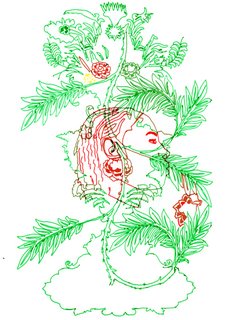
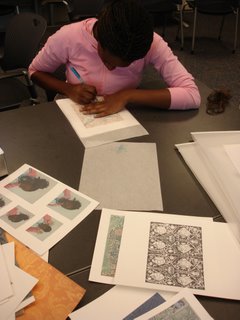
These images are from a fall workshop with The Project Home Teen Program. Walking around the Philadellphia Museum of Art the group fell in love with the ornament from all parts of the world. Using portraiture and ornament from the past as a guide, we set out to design newspaper boxes for the Teen Program quarterly newspaper... The North Philly Metropolis.
The boxes are being finished up... they will be on corners around Broad and Ridge in North Philadelphia.
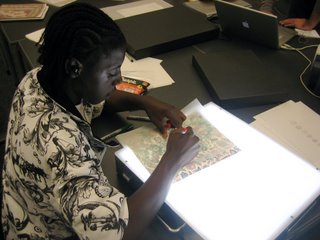
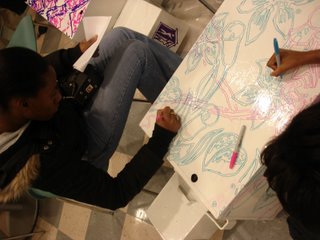
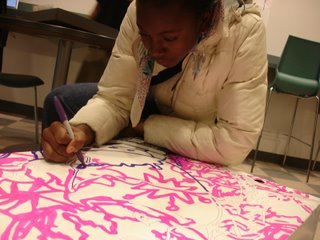
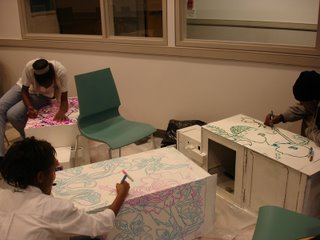

Focus on ornament is a natural and universal system of human thought... Essentially driven by line work rather than mass, space, texture, color, materiality, or portraiture, although all of these properties contribute to its visibility... However, ornament also represents things and actions that do not originate in utility; its meanings, therefore, are essentially combinational, and its figures tend to become metamorphoses… The life, the playfulness, and the fantasticality of ornament exist in the liminal or transitional space of its objects…The term ornament possesses a distinctive etymology and its practice a timeless character that sets it apart from more changeful concepts such as art and decoration even as it participates in the activities innate to those disciplines... The English word ornament comes from the Latin word ornamentum, rooted in ornare, which in a modern interpretation means “to confer grace upon some object of ceremony.” The term ornament, by most accounts, originated inside the Greek term Kosmos, which meant something like “universe,” “order,” and “ornament.” In such a Greek translation, ornament is implicated with concepts so vast that at first it may seem impossible to disentangle it from an inventory of all things... The identity of the term ornament, therefore, has always depended on the incorporation of other considerations into the fabric of practical objects – considerations that might fulfill a picture of the world in which the object is performing. That accomplishment is essentially combinational, which is to say that ornament functions as a visual system or type of configuration capable of apprehending and uniting multiple meanings. Such an act of combining may not have to be as culturally specific as it must be visually intelligible... The principal strategy required to achieve an image of combination in ornament is to present a spectacle of transformation. In that spectacle, it may appear that on thing is turning into another and vise versa. When Henri Focillon, in The Life Forms in Art, exquisitely identifies ornament as “the chosen home of metamorphoses,” he makes ornament into a habitat that allows metamorphosis... Within that habitat, the primary facts and expressions of utility, which are present and potentially visible in the construction and space of any practical object, are in the first order of things to be transformed... In fact if everything were to be admitted intact-such as the entire body of a bird rather than simply the wings or wing likeness- there would be no mediation but instead a crowd of conflicting creatures. Ornament would merely be a depository or an anarchy of distinct beings. In this respect, the realm of ornament is not just a place of gathering but is also a place in which dismemberment and combination are sanctioned. In order to mediate among things, the mechanisms of ornament must divide, transform, and reconventionalize the articles of mediation as well as the meanings implicit in the states in which they were born. This particular activity creates metamorphoses, which obey the laws of ornament.
all text taken from an unknown source... not really... I just need to return to the library because I forgot to write down the biblio.... it was a book on ornament though:)


